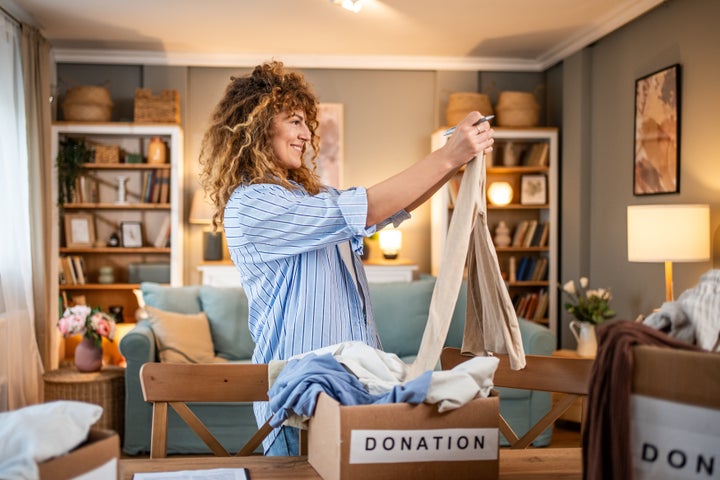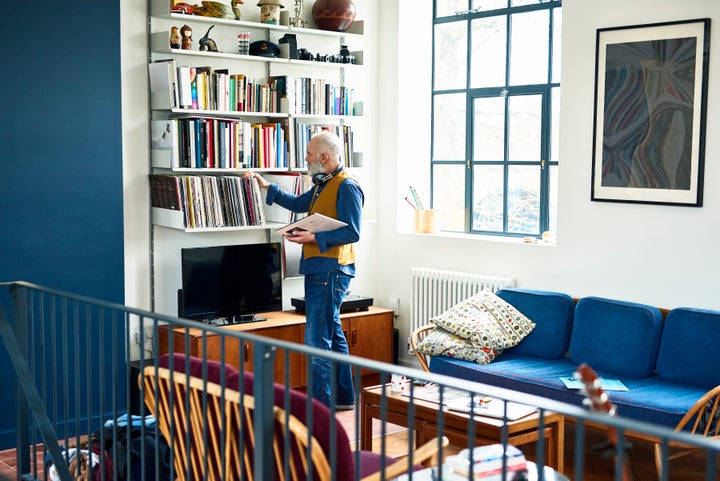
We’re more than a month into the spring season, which means “spring cleaning” is on many Americans’ minds.
When it comes to designing and organising our homes, we have a history of looking to other cultures for inspiration, like the Japanese KonMari method or the ancient Chinese practice of feng shui.
In more recent years, however, many Americans have embraced a Scandinavian approach to tidying: Swedish death cleaning.
What is Swedish death cleaning?
“Swedish death cleaning is a decluttering method originating from Sweden, with a focus on minimising one’s possessions to ease the burden on loved ones after death,” Regina Lark, a professional organiser and founder of A Clear Path, told HuffPost. “It involves going through your belongings and deciding what to keep, discard or give away, with the intent of simplifying life, and leaving behind only what is meaningful or necessary.”
Swedish author Margareta Magnusson coined the term in her 2017 book, “The Gentle Art of Swedish Death Cleaning: How to Free Yourself and Your Family from a Lifetime of Clutter.”
“She details a step-by-step process that moves you from letting your loved ones know to decluttering, categorising items, giving things away, keeping moments, and collating important documents,” said Dina Smith, the professional organiser behind Closet Therapy with Dina. “Her approach emphasises minimalism and decluttering to prevent others from having to do it for you. It is a more compassionate way of dealing with an individual’s clutter so that loved ones are not burdened with the responsibility.”
In 2023, Peacock released an eight-episode series based on Magnusson’s book. Produced and narrated by Amy Poehler, the show follows an organiser, a designer and a psychologist from Sweden as they help Americans confront their stuff, as well as their feelings about mortality and the future.
Lark noted that a lot of her clients have sought her organising services after personally experiencing what it’s like to dismantle a parent’s possessions after their death.
“Honestly, Swedish Death Cleaning is just a new term to describe what I call ‘mindful decluttering,’” she explained. “I’ve long encouraged my clients to do what it takes to help relieve themselves of the stuff and clutter of everyday life. One of the biggest challenges for most people is that they tend toward clutter if they have a lousy relationship with time, or if they have executive function challenges that don’t allow them to plan, prioritise or sequence.”
What are the benefits of this approach to tidying?
Since 2017, the concept of Swedish death cleaning has gained fans across the globe, both due to its enticing name but also the benefits it brings to those who try it out.
“Psychologically, the practice can provide a sense of control, accomplishment and peace of mind, knowing that your affairs are in order,” Lark said. “It can also be a reflective and cathartic process, allowing individuals to revisit memories and legacy, potentially easing anxiety about mortality.”
Although Swedish death cleaning can be particularly beneficial for aging adults, Lark emphasised that anyone can undertake this process at any stage of life.
“Starting early can instil good decluttering habits and ensure that one’s possessions truly reflect their values and lifestyle, making the process an ongoing part of life rather than a task for later years,” she said. “I consider it basic ‘De-clutter 101.’ The plot twist, at least for me, is that the practice involves assessing the emotional value of each item and deciding whether it should be kept, shared or let go. The process encourages individuals to share stories and memories associated with these items, potentially passing them along to someone who will cherish them.”

Swedish death cleaning encourages people to be mindful and consider what is and is not valuable to them.
“It creates a renewed sense of connection and meaning through decluttering or releasing things that no longer serve the owner,” Smith said. “Gifting items to loved ones, donating, and even selling items allows the owner to see their item put to good use or even make money.”
She believes it is a more holistic way to get into organising and carries a higher sense of purpose by incorporating care and concern for your loved ones’ well-being. You can also pass down the benefits to younger family members.
“This approach can be a fun and lighthearted way for families to prepare for downsizing, cohabiting with loved ones and even educating young children about the value of their possessions,” Smith noted.
What should you know before you try it?
While sharing memories and setting aside items to pass along to someone after you pass away is a lovely process and sentiment, Lark encourages her clients to really prioritise the items that matter the most and feel comfortable letting go of other things.
“I’m more an advocate of getting it the heck out of the house so that you can live comfortably, and staying out of how the end user may feel being in possession of your stuff,” she said. “I’m not sure why we want to burden our offspring with things they will likely never use ― family memorabilia notwithstanding.”
The Swedish death cleaning process can also be very psychologically taxing.
“The most obvious downside is the emotional toll of examining your possessions alongside contemplating your mortality,” Smith said. “It can also become difficult to resist the urge to adopt an ‘all or nothing’ mindset leading to tossing out too much.”
That’s why bringing in a friend who can offer a more objective perspective on your belongings ― or even a professional organiser ― can help you find a healthy balance. A helper will also keep you on task, especially through the parts that are particularly emotional and heated, or tedious and boring.
“I think a lot of people have clutter because they have pretty lousy executive functioning skills,” Lark said. “That, coupled with life’s traumas and major life transitions, can bring or keep clutter in our lives. But managing it has a lot to do with the hardwiring of our brains and our executive functioning skills. So I encourage everyone to plan, prioritise and even add to the calendar their DIY declutter sessions.”
Smith emphasised that there is no wrong way to make Swedish death cleaning part of your life. And this approach to tidying doesn’t have to be the right one for you anyway.
“There are many doors to becoming organised,” she said. “Whatever door you choose, organised living leads to more time for yourself and with loved ones.”